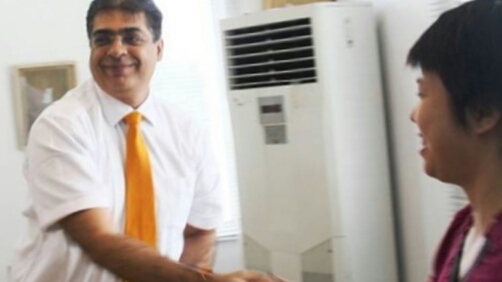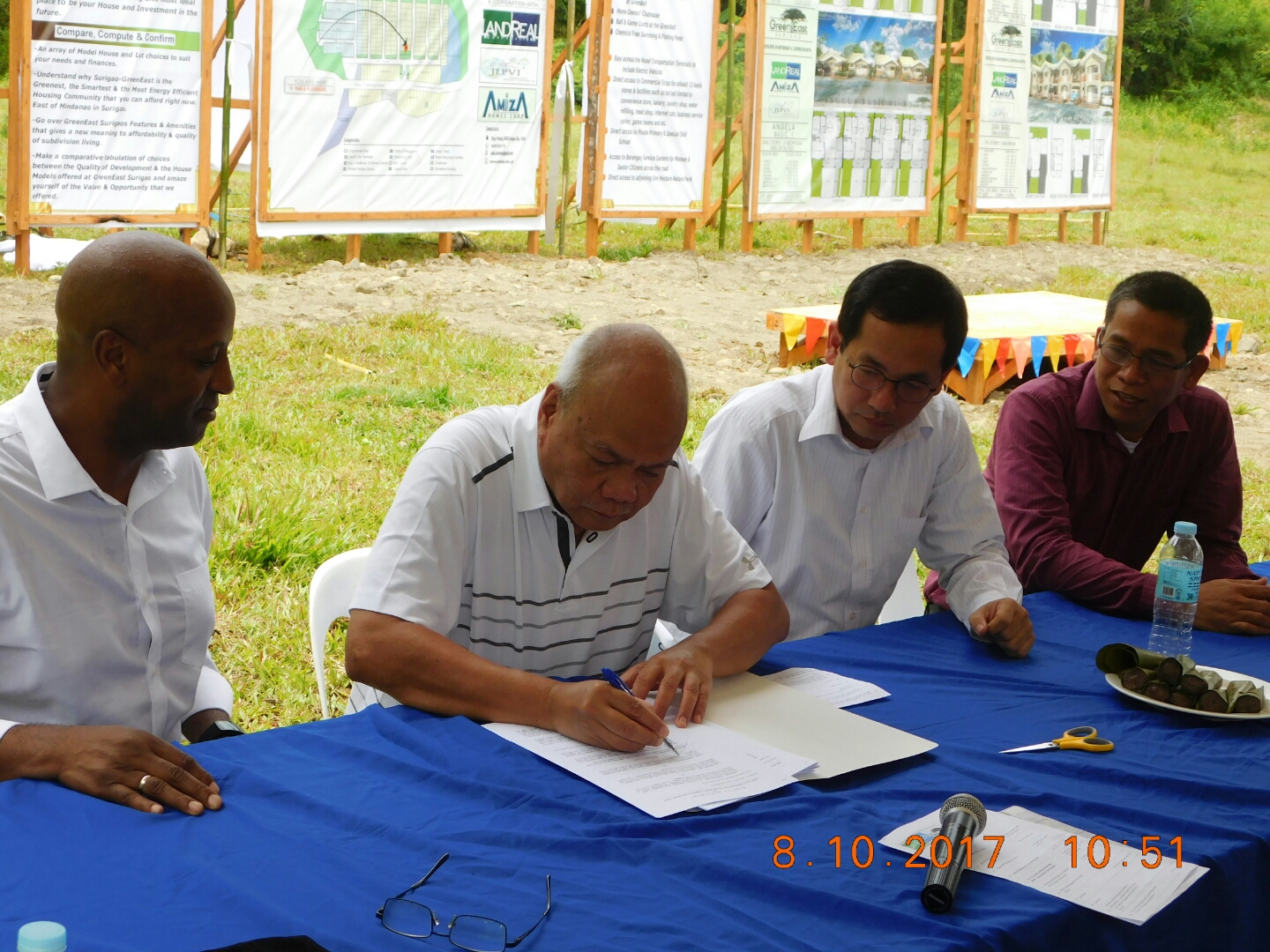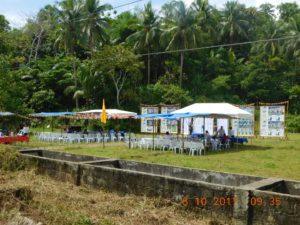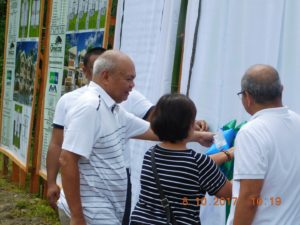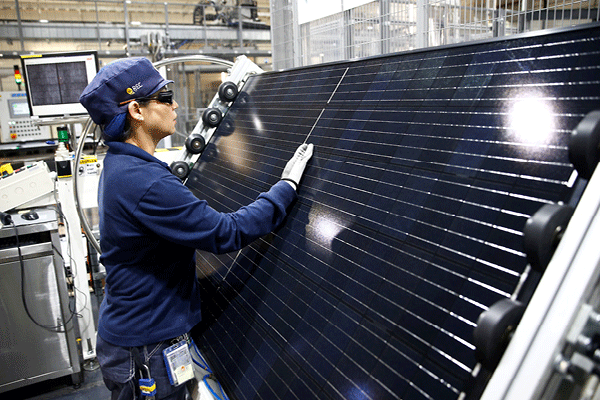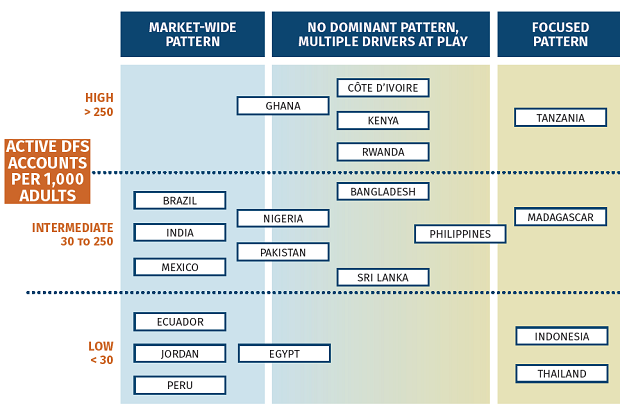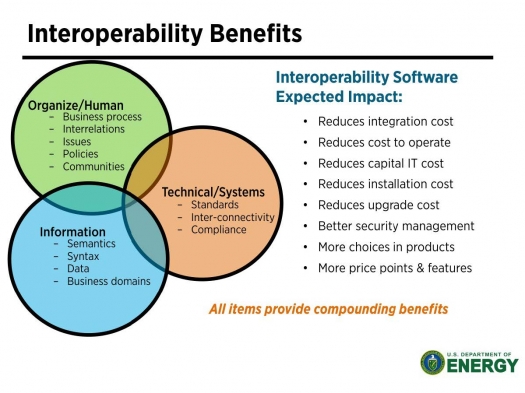Category: Uncategorized
Introducing Aptech (India’s IT Top Trainer) to the Phillipines
Who is Aptech?
Aptech is a global learning solutions company that commenced its education and training business in 1986 and has trained over 6.8 million students worldwide. Aptech has presence in more than 40 emerging countries through its two main streams of businesses – Individual training and Enterprise Business. As a leader in career education, it has over 1300 centres of learning across the world. Under Individual Training, Aptech offers career and professional training through its retail brands: Arena Animation & Maya Academy of Advanced Cinematics (both in animation & multimedia), Aptech Learning (IT, aviation & hospitality, banking & finance, hardware & networking, and English language), Lakmé Academy powered by Aptech, Aptech Montana International Preschool, and Aptech Global Training (International training). Enterprise business includes Training & Assessment Solutions for Corporate & Institutes (Aptech Training Solutions, and Aptech Assessment & Testing Solutions).
Aptech Trains for Employment Not Just Degrees
What will they Offer C360 Clients and Partners?
What will they Offer C360 Clients and Partners?
To assist in our customized “Train the Trainer” Program to train the next Filipino generation of world builders we proudly introduce via our partner Aptech through Pravir Arora, Executive Vice President:
Why Aptech?
The Internet Generation Has Begun
With companies like Microsoft and IBM now led by a wonderful Indian American today and employing more staff in India than their US offices. India is a force in technology and especially software development. From the early days of the invention of Novell the first computer networking application, Broadvision ecommerce and the email server by Microsoft, Indians have made a huge impact. We feel Aptech in the Philippines will fill a gap efficiently to ensure Filipinos are a part of the next generation of internet entreprenuers, engineers and executive leaders.
Contact Information
For more details contact james@c360ioe.com or telephone #639277845825 if your a college, university of high school seeking capacity building assistance.
Great kickoff with LandReal’s GreenEast Smart Communities
We are excited with the signing of two new real estate developments (500 home) in Surigao City and (1400 home) in Lumbia in the Philippines. Our team will provide solar, electric transportation, wireless services and our C360° IoE Platform of software applications as we endeavor to build the smartest and most efficient communities in Asia. We thank Architect Andre Almocera for believing in our team and USTP’s Ambrosia “Butch” Cultura for providing us the opportunity to make the world a greener more sustainable and secure place.
Salamat!
James McCorkle, CEO
Here’s how to ensure smart cities benefit everyone
Kendra L. Smith, The Conversation, Nov. 2, 2016, 12:06 AM @ http://www.businessinsider.com/heres-how-to-ensure-smart-cities-benefit-everyone-2016-11
By 2030, 60 percent of the world’s population is expected to live in mega-cities.
How all those people live, and what their lives are like, will depend on important choices leaders make today and in the coming years.
Technology has the power to help people live in communities that are more responsive to their needs and that can actually improve their lives. For example, Beijing, notorious for air pollution, is testing a 23-foot-tall air purifier that vacuums up smog, filters the bad particles and releases clear air.
This isn’t a vision of life like on “The Jetsons.” It’s real urban communities responding in real-time to changing weather, times of day and citizen needs. These efforts can span entire communities. They can vary from monitoring traffic to keep cars moving efficiently or measuring air qualityto warn residents (or turn on massive air purifiers) when pollution levels climb.
Using data and electronic sensors in this way is often referred to as building “smart cities,” which are the subject of a major global push to improve how cities function. In part a response to incoherent infrastructure design and urban planning of the past, smart cities promise real-time monitoring, analysis and improvement of city decision-making. The results, proponents say, will improve efficiency, environmental sustainability and citizen engagement.
Smart city projects are big investments that are supposed to drive social transformation. Decisions made early in the process determine what exactly will change. But most research and planning regarding smart cities is driven by the technology, rather than the needs of the citizens.
Little attention is given to the social, policy and organizational changes that will be required to ensure smart cities are not just technologically savvy but intelligently adaptive to their residents’ needs. Design will make the difference between smart city projects offering great promise or actually reinforcing or even widening the existing gaps in unequal ways their cities serve residents.
 Shutterstock
Shutterstock
City benefits from efficiency
A key feature of smart cities is that they create efficiency. Well-designed technology tools can benefit government agencies, the environment and residents. Smart cities can improve the efficiency of city services by eliminating redundancies, finding ways to save money and streamlining workers’ responsibilities. The results can provide higher-quality services at lower cost.
For instance, in 2014, the Transport for London transit agency deployed system that lets residents and London’s 19 million visitors pay for bus and subway fares more quickly and safely than in the past. When riders touch or tap their phone or other mobile device on a reader when entering and exiting the bus and subway system, a wireless transaction deducts the appropriate amount from a user’s bank account.
The city benefits by reducing the cost of administering its fare payment system, including avoiding issuing and distributing special smartcards for use at fareboxes. Transit users benefit from the efficiency through convenience, quick service and capped fares that calculate the best value for their contactless travel in a day or across a seven-day period.
Environmental effects
Another way to save money involves real-time monitoring of energy use, which can also identify opportunities for environmental improvement.
The city of Chicago has begun implementing an “Array of Things” initiative by installing boxes on municipal light poles with sensors and cameras that can capture air quality, sound levels, temperature, water levels on streets and gutters, and traffic.
The data collected are expected to serve as a sort of “fitness tracker for the city,” by identifying ways to save energy, to address urban flooding and improve living conditions.
Helping residents
Perhaps the largest potential benefit from smart cities will come from enhancing residents’ quality of life. The opportunities cover a broad range of issues, including housing and transportation, happiness and optimism, educational services, environmental conditions and community relationships.
Efforts along this line can include tracking and mapping residents’ health, using data to fight neighborhood blight, identifying instances of discrimination and deploying autonomous vehicles to increase residents’ safety and mobility.
Ensuring focus on service, not administration
Many of the efficiencies touted as resulting from smart city efforts relate to government functions. The benefits, therefore, are most immediate for government agencies and employees. The assumption, of course, is that what benefits government will in turn benefit the public.
However, focus on direct improvements for the public can become an afterthought. It can also be subverted for other reasons.
 Luciano Mortula/Shutterstock
Luciano Mortula/Shutterstock
For instance, global market projections for smart cities are huge. Companies see big opportunities for selling technology to cities, and local leaders are eager to find new investors who will improve their communities. That can make smart cities appear to be a win-win situation.
City leaders may also use smart city discussions as a vague “self-congratulatory” method to emphasize their forward thinking, and to reinforce a broadly positive – if undefined – view of the city. By talking about greater connectivity and improved technical capabilities, city leaders can market the city to future residents and businesses alike.
But if leaders focus on smart city projects as helping government, that won’t necessarily improve residents’ lives. In fact, it can reinforce existing problems, or even make them worse.
Who wins from smart city projects?
When governments decide on smart city projects, they necessarily choose whom those efforts will benefit – and whom they will neglect. Even when it’s unintentional – which it often is – the results are the same: Not all areas of a smart city will be exactly equally “smart.” Some neighborhoods will have a greater density of air-quality sensors or traffic cameras, for example.
And not all smart city projects are having completely positive effects. In India, for example, Prime Minister Narendra Modi pledged to build 100 smart cities as a way to manage the needs of his country’s rapidly urbanizing population. Yet the efforts are bumping up against challenges new and old. These include longstanding problems with land ownership documentation, developing policies to accommodate new markets and limit the old, and conflicts with vulnerable populations pushed out to make room for new smart city initiatives.
In Philadelphia, a program intended to provide the city’s low-income, underemployed residents with job training on their smartphones didn’t address widespread socioeconomic inequality, among other problems. As one researcher put it, the program was “empty policy rhetoric” designed to attract business.
The much-ballyhooed Songdo City development in South Korea involved enormous investment from the public and private sectors to create a smart city billed as an urban hub of innovation and commerce. And yet, 10 years after it began, its highest praise has been from those who call it a “work in progress.” Others, less charitable, have called it an outright failure. The reason should give us pause when designing other smart cities: Songdo was designed and built as a top-down, “high-tech utopia” with no history and, crucially, without people at its center.
To avoid these troubled fates, officials, business leaders and residents alike must keep a critical eye on smart city efforts in their communities. Projects must be both transparent and aimed at publicly desirable improvements in society. Technology cannot become the focal point, nor the end goal. Smart city innovation, like all urban development and redevelopment, is a very political process. Residents must hold city leaders accountable for their efforts and their implications – which must be to improve everyone’s lives, not just ease government functions.
C360 Global Launch at CDO Bites
“We are proud to be incubated at the University of Science and Technology of Southern Philippines (USTP) Innovation CDO Bites business center. The students are smart and the faculty are super caring towards our projects which include the following Sustainable Infrastructure Opportunities unifies with our C360° Internet of Everything (IoE) Integration:
– Privatization of MisOrTel into a Intenet applications and Knowledge Process Outsourcing (KPO) company targeting Municipalities, Businesses and BPOs
– Landreal Corporations 4,000 Solar Ready Homes and Sustainable Communities in Lumbia, Iligan and Surigao
We look forward to a long and evolutionary experience with USTP CDO Bites assistance, leadership and experience from past successes ”
Chairman and CEO James McCorkle
Here comes the sun
JUL 27, 2017 | BY HENNING GLOYSTEIN AND VERA ECKERT OF REUTERS
Here comes the sun
Investors are hot on solar projects in Southeast Asia as prospects in Europe dry up.
Investors are increasingly excited about the prospects for much faster growth in the solar power industry in Southeast Asia, which has until now been a backwater for renewable energy.
They say that the region is in a perfect position to benefit from rapidly declining prices in solar panels. It has strong economic growth, relatively high costs of electricity and a shortage from traditional sources, undeveloped infrastructure in more remote areas, plenty of sunshine, and backing for more renewable energy from many of Southeast Asia’s governments.
“Dramatically falling costs for solar energy technologies means businesses and governments are choosing renewable energy not for environmental reasons but for economic ones,” says Roberto De Vido, spokesman for Singapore-based Equis, one of Asia’s biggest green energy-focused investment firms with $2.7 billion in committed capital. “It simply makes good business sense. And that’s a trend that’s not going to change.”
By the end of last year, Southeast Asia had installed solar capacity of only just over 3 gigawatts (GW), a mere 1 percent of global capacity, according to data from the International Renewable Energy Agency (Irena).
Steve O’Neil, the chief executive of Singapore-based solar panel maker REC, says he expects that to grow by 5 GW of new installations every year between 2017 to 2020. That’s the equivalent of building five standard fossil-fuel power stations annually. “People don’t realise what is about to happen, when you’re in the middle of exponential growth,” said REC’s O’Neil. “It’s transformational.”
Some European funds are among those looking at the region. “The projects on offer in Europe are stagnating, so European investors are looking in that direction with great interest,” says Armin Sandhoevel, chief investment officer for Infrastructure Equity at Allianz Global Investors, whose team manages 1.6 billion euros ($1.76 billion) worth of renewable investments.
“In Asia, you’d expect double-digit returns. That’s hard to achieve in Europe,” he said. Southeast Asia has a population of more than 600 million and annual power demand growth of 6 percent, which most countries struggle to meet. Solar power potential is measured by Global Horizontal Irradiation (GHI), a measurement of the intensity of the sun. Thailand has a GHI that can produce 1,600 to 2,000 kilowatt-hours of solar power per square meter (kWh/m2), well above the 1,000 to 1,200 kWh/m2 in Europe’s solar leader Germany, according to solar weather and data provider Solargis.
The region is ripe for a boom because solar panel prices have crashed to under 50 cents per watt of electricity today from $70 per watt in 1980 as technology and manufacturing efficiency have improved consistently. At the same time, Southeast Asian countries have all set ambitious renewable energy targets, ranging from 18 percent of overall energy generation mix in Thailand and Malaysia to 35 percent in the Philippines, up from negligible levels today.
There are, of course, still risks for investors – including currency volatility, the difficulties of making land acquisitions, and usually the lack of any government guarantees, said Sharad Somani, head of Asia/Pacific Power & Utilities at KPMG.
Storing solar power through the night remains a hurdle too, though battery technology is improving rapidly.
VENTURE CAPITAL
Bringing together international investors, panel makers, and potential users is a small but growing group of venture capital firms, mostly based in Singapore.
GA Power is one such firm. Led by German solar business veterans, it focuses entirely on financing and developing solar projects across Southeast Asia. “There is more money than there are projects. If you can offer professional developed projects, you’ll have no issue organising funding,” says Roland Quast, GA Power’s managing director, adding that “a solar boom in Southeast Asia is unavoidable” given it is now a competitive power source.
He said an investor can expect around a 12 percent rate of return on average in the region. Mid-sized solar projects that can be turned on without having to tap into a larger grid are in favour in the region as governments seek to bring power to an area without having to add expensive infrastructure, Quast said.
“Today we have unique confluence of all three factors necessary for success of such projects – demand for projects from government/utility side supported by conducive regulatory framework, strong developer and supplier interest and abundance of domestic and international financing availability,” says KPMG’s Somani.
KILLER ARGUMENT
At the REC solar panel factory in Singapore, one of Singapore’s biggest manufacturing sites, a thousand workers and more than a hundred robots work around the clock, churning out 20 containers full of panels every day, which are immediately sent to overseas customers, increasingly to Southeast Asia.
“We produce 14,000 panels per day, which go into 20 containers, 24/7. We never stop,” REC’s O’Neil told Reuters during a recent visit to the factory. Founded in Norway, headquartered in Singapore, and owned by Chinese industrial giant ChemChina, REC sells globally, but O’Neil says that he expects “Southeast Asia to become a game-changer.”
The business is cut-throat. Cheap Chinese production of solar panels has left a trail of collapsed companies in its wake – the bankruptcies of Germany’s SolarWorld, once Europe’s biggest panel maker among them. To survive, REC says it needs to be in a relentless drive to improve productivity, including employing low-wage Malaysian workers and automating as much as possible.
“Our panels are now cheaper than a same-sized window,” says O’Neil.
See: http://www.legalbusinessonline.com/features/here-comes-sun/74704
Interoperability: More Than a Technological Challenge
Interoperability: More Than a Technological Challenge
For most practitioners, interoperability brings to mind images of switches, network connections, aggregators and interfaces — in short, the technical tools that allow modern payment systems to work together. However, CGAP’s new global scan on digital financial services interoperability makes it clear that exchanging payments is about much more than technical connections.
No matter how well-designed the technology connecting payment systems, interoperability will not reach its full potential unless providers are incentivized to pass payments to each other. For this reason, interoperability must sometimes balance the conflicting interests of providers, striking a middle ground between competition and coordination. Achieving this balance is a part of what makes interoperability a complex issue. It is also a part of what makes interoperability more than just switches and aggregators.
CGAP’s assessment of mass-market, low-value accounts in 20 countries found that effective interoperability in digital financial services depends on doing three things well:
-
Governance and operating rules. Rules should be in place to establish how participants in the interoperability arrangement will make decisions, jointly manage operations, and consider risk.
-
Business agreements and incentives. Agreements should balance the economic interests of participants, from pricing to brand marketing, to incentivize the exchange of payments.
-
Technical integration. The technical infrastructure connecting participants, anything from a payment switch or bilateral connection to a third-party service, should be sound.
CGAP’s survey, conducted with Glenbrook Partners, found interoperability in some form in each of the 20 countries; however, it did not find any country where all three elements were working at an optimal level. More broadly, it noted that there is often not enough focus on governance and business agreements, and that focusing too heavily on technical aspects may actually hinder the scalability of interoperable transactions.
Beyond these elements, two broad patterns in the approaches to interoperability emerged from our analysis of the scan. Some countries have followed a market-wide approach aimed at building a centralized infrastructure across all use cases and providers. Others have followed a more focused approach, first tackling a small number of use cases according to the needs of the providers involved.

The timing of these efforts similarly varies. In some markets, interoperability is being discussed as DFS grows and matures. In other markets, interoperability discussions have started before DFS has made a sizeable impact. There is not yet enough evidence to determine whether a particular timing or approach works best, but CGAP will continue to monitor the markets where these approaches are being deployed and whether they are achieving success.
Interoperability is a complex, multi-dimensional puzzle. Models can be difficult to get right. However, interoperable systems are important to achieving broader financial inclusion. Network effects from larger and more efficient systems promise expanded use of digital financial services by low-income populations. Expanded consumer use cases mean this access has the potential to enrich lives beyond the payment uses most common today. A detailed analysis of this global scan is available in a working paper and an accompanying PowerPoint with one-page descriptions of each country.
Are certain interoperability approaches most relevant for specific use cases? What is the relevance of digital financial services market development in starting to connect providers? The scan raises a number of unanswered questions. CGAP will continue to engage in this issue to help ensure interoperability works for the poor.
CGAP Working Paper: Digital Finance Interoperability and Financial Inclusion: A 20-Country Scan, by Pablo Garcia Arabehety, Gregory Chen, William Cook and Claudia McKay | http://www.cgap.org/publications/digital-finance-interoperability-financial-inclusion
Jeff Bezos and other investors raise $200 million for vertical farming startup Plenty
Jeff Bezos and other investors raise $200 million for vertical farming startup Plenty
![]() Vertical farming startup Plenty earns million from investors, including Amazon’s Jeff Bezos. (Photo courtesy of Plenty)After announcing Amazon’s plans to gobble up Whole Foods for $13.7 billion, CEO Jeff Bezos is stepping further into the fresh foods market by investing in a vertical farming startup called Plenty Inc.
Vertical farming startup Plenty earns million from investors, including Amazon’s Jeff Bezos. (Photo courtesy of Plenty)After announcing Amazon’s plans to gobble up Whole Foods for $13.7 billion, CEO Jeff Bezos is stepping further into the fresh foods market by investing in a vertical farming startup called Plenty Inc.
Plenty announced yesterday that it raised $200 million in Series B funding in what the company calls the largest agricultural technology investment of all time. This is a huge jump from the $24.5 million Plenty raised in 2016.
SoftBank Vision Fund led the investment along with six other backers including Bezos Expeditions and Innovation Endeavors, a venture capital firm backed by Alphabet’s executive chairman Eric Schmidt.
Since Plenty CEO Matt Barnard founded the startup in 2014 with Nate Storey and Nate Mazonson, the company has expanded rapidly. It acquired Bright Agrotech, a vertical farming technology startup, last month and has grown to 100 employees. As part of the latest investment round, SoftBank Vision Fund Managing Director, Jeffrey Housenbold, will join Plenty’s board.
In the past, vertical farming investments haven’t panned out — Local Garden Vancouver, a similar crop-yielding greenhouse concept, declared bankruptcy a few years ago and other startups in the space have struggled over the years.
Plenty seems to be different because rather than growing horizontal plants stacked above each other, Plenty grows its crops vertically with the plants growing outward instead of up. Although the company hasn’t revealed much about its methods, Plenty says it plans to use machine learning and climate creation technology without having to genetically modify its seeds.
‘Our technology is uniquely capable of growing super clean food with no pesticides nor GMOs while cutting water consumption by 99 percent, making locally-grown produce possible anywhere,” Barnard said in a news release.
Moving Towards Interoperable Internet-of-Things Deployments in Smart Cities
by Gregor Schiele, John Soldatos and Nathalie Mitton
The objectives of the European FP7 VITAL project are to overcome Internet-of-Things (IoT) silos in Smart Cities and enable the deployment and integration of Internet-Connected-Objects (ICO) independently of the underlying IoT architecture. In achieving these goals, the project assists in the transition towards smart, secure and cost-effective cities.
Using the Internet-of-Things (IoT) to deploy Internet-Connected-Objects (ICOs) in Smart Cities raise several challenges, especially in terms of interoperability. Drawing on semantic interoperability solutions developed for IoT systems, the VITAL project aimed to bridge the numerous silos which exist in IoT deployments in Smart Cities. This was achieved by repurposing and reusing sensors and data streams across multiple applications, without compromising citizens’ security and privacy. This approach promises of increase Return-On-Investment (ROI) figures which are associated with the typically costly development of Smart City infrastructures by expanding the number and scope of potential applications.
IoT technology enables a large number of physical and virtual ICOs to be coordinated so as to provide human-centric services in a variety of sectors, especially in Smart Cities [1]. Many research, pilot and commercial applications have been developed thus far, ranging from those which use a RFID/Wireless Sensor Network to those which involve large numbers of different devices and ICOs. Collectively, these applications have a significant impact on both business and society. Thus, the IoT paradigm is relevant to the development and implementation of sustainable urban development policies. However, a number of IoT systems have been created in parallel which is leading to the creation of IoT application silos within modern Smart Cities (Figure 1). These silos often reflect the organizational structures of local governments. For example, the separation of law enforcement, transportation and public works into three separate departments results in different IoT deployments and the creation of three associated technical silos.
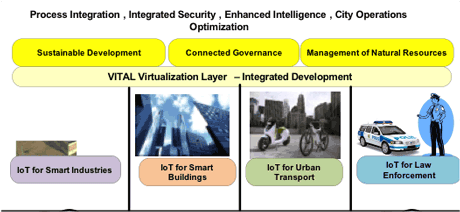
Figure 1: IoT application silos within modern Smart Cities
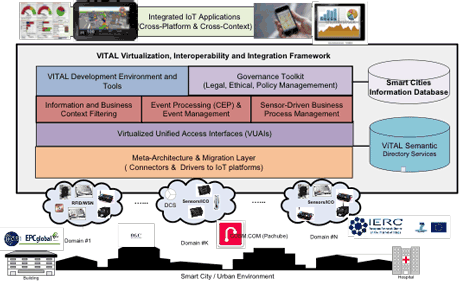
Figure 2: VITAL architecture
Semantic Interoperability Solutions for the IoT
The interoperability of IoT systems extends beyond technical or syntactic interoperability, towards semantic interoperability which mainly explores the use of a common ontology for describing resources across disjoint IoT systems [1]. Recently, several research initiatives have extended the ontology of the W3C SSN incubator group, which aims to overcome the limitations of pre-existing XML-based formats [2] and the fragmentation of sensor ontologies into specific domains or applications [3]. This ontology describes sensors, observations and related concepts, but not domain concepts (e.g., for Smart Cities).
An example of a system which provides a common semantic layer is the OpenIoT project (see link below). This system enables humans, devices and services to announce and annotate different (virtual) sensors/devices as W3C SSN compliant sensors. OpenIoT offers an open source cloud-based IoT platform which includes components like sensor middleware, cloud data storage and a scheduler (see link below).
VITAL: Semantic Smart City Interoperability
The VITAL project builds on these approaches and extends two main aspects to ensure the semantic interoperability of evolving Smart City IoT applications and projects. It uses the SSN ontology to model data and the OpenIoT as a common data management component. The first extension provides a much richer data model for Smart City applications, including city-wide information (e.g., demographics and stakeholder details) as well as city-specific Key Performance Indicators. The second extension provides interoperable access, not only for data coming from different IoT systems (e.g., OpenIoT) but also for services provided by these systems (e.g., discovery, monitoring and complex event processing). This allows for higher level services to be created which can then be integrated into a single federated service view.
VITAL will be tested in two Smart Cities, London and Istanbul, who are represented in the project consortium by the London Borough of Camden and the Istanbul Metropolitan Municipality, respectively.
Conclusion
VITAL will enable applications and service providers to integrate services and data streams stemming from multiple IoT ecosystems, architectures and middleware infrastructures. This will allow for existing sensors and IoT systems to be reused and repurposed, increasing the ROI on Smart City infrastructures. We hope this will reduce the costs associated with developing new Smart City applications for city authorities and the open developer community and bring time efficiencies, leading to a new wave of applications in cities across Europe.
VITAL is a three year joint European project, started in September 2013 by a consortium of ten partners from Ireland, France, Greece, Italy, Spain, the UK and Turkey.
Links:
http://www.vital-iot.com
http://openiot.eu/
http://github.com/OpenIotOrg/openiot
References:
[1] M. Presser, P. Barnaghi, M. Eurich, C. Villalonga: “The SENSEI project: Integrating the physical world with the digital world of the network of the future”, IEEE Communications Magazine, pp. 1-4, 2009
[2] A. Sheth, C. Henson, S. Sahoo: “Semantic Sensor Web”, IEEE Internet Computing, 12 (4), 2008
[3] M. Compton, P. Barnaghi, L. Bermudez, R. G. Castro, O. Corcho, S. Cox, et. al.: “The SSN Ontology of the Semantic Sensor Networks Incubator Group”, Journal of Web Semantics: Science, Services and Agents on the World Wide Web, ISSN 1570-8268, Elsevier, 2012.
Please contact:
Gregor Schiele, NUIG, Ireland
E-mail: gregor.schiele@deri.org
John Soldatos
Athens Information Technology, Greece
E-mail: jsol@ait.gr
Nathalie Mitton, Inria, France
E-mail: nathalie.mitton@inria.fr
Laying the Foundation for a Future of Connected Buildings
Link: http://energy.gov/eere/buildings/articles/laying-foundation-future-connected-buildings
Laying the Foundation for a Future of Connected Buildings
July 12, 2016 – 1:02pm
Interoperability benefits across the technical, institutional, and economic domains. Credit: The GridWise® Architecture Council Interoperability benefits across the technical, institutional, and economic domains. Credit: The GridWise® Architecture Council Interoperability benefits across the technical, institutional, and economic domains. Credit: The GridWise® Architecture Council Conceptual valuation method, as recommended by the Valuation of Transactive Systems report. Credit: Pacific Northwest National Laboratory Buildings Interoperability Framework
Joe Hagerman
Senior Policy Advisor, Building Technologies Office
THE BRIEF
- DOE’s Buildings-to-Grid Program is coordinating strategies and activities with stakeholders to integrate and optimize homes and commercial buildings with the nation’s energy grid amid a rapidly changing energy landscape.
- DOE recently published three reports, which touch upon (1) the current buildings interoperability landscape, (2) the significant opportunity that interoperability presents for the country, and policy options for ensuring a holistic approach, and (3) a framework for defining value within a connected, interoperable buildings-to-grid ecosystem.
What is interoperability?
Interoperability is the ability to exchange actionable information between two or more systems within a home or building, or across multiple buildings and the grid. If implemented on a national scale, its benefits could be enormous.
Advances in connected equipment and buildings are making a daily occurrence out of the once seemingly impossible: you say a command, your lights turn on; you look at your phone, it lets you know you’ve run out of milk; you walk in the door, the thermostat has already adjusted to your ideal temperature. These technologies are being used to make buildings more intelligent—giving people access to new information that makes their lives easier, and in some cases giving them benefits, like lower utility bills or improved comfort, without making them do any work at all. But what if our buildings could do more? What if they were both smart enough to “talk” to each other, and empowered to seek out and consummate beneficial opportunities to trade energy services?
A vision is emerging of a connected world in which building equipment and systems coordinate to efficiently meet owners’ and occupants’ needs, and where buildings regularly transact with other buildings in ways that benefit our entire energy system. Realizing this vision, however, will require a holistic approach to integrating new technologies into the grid—one that ensures that buildings and building systems and equipment can seamlessly share information and coordinate their activities through value-driven transactions.
INTEROPERABILITY—A GATEWAY TO THE FUTURE
Interoperability—the ability of two or more systems to exchange actionable information—is key to making this vision a reality. It requires that all systems involved in the transaction can reliably and securely exchange information, as well as understand what the exchanged information means.
Take this example: a building is generating excess electricity through its rooftop solar panels, while another is expecting an influx of people and needs more power to operate its air conditioning systems. If these buildings could talk, the second could transact with the first to obtain the energy it needs, the first could be compensated for the energy it produces, and the grid could profit by not having to bring a coal-fired power plant online to meet additional demand.
The technology needed to support the requisite equipment and system interactions has been demonstrated under various conditions, and DOE, partly through its Grid Modernization Lab Consortium, is further developing these technologies. Work remains, however, to develop and implement a communications and operations framework that can easily and affordably enable this highly complex level of coordination at scale, and between diverse building equipment and systems all across the grid.
THE STATE OF THE MARKET AND THE NATIONAL OPPORTUNITY
DOE’s Buildings Interoperability Landscape report provides an overview of existing government and industry efforts around interoperability, including existing and emerging state-of-the-art concepts for integrating connected equipment. It lays out the foundation of a shared vision for the future, highlighting potential goals and attributes to include in an upcoming interoperability roadmap. DOE intends to engage stakeholders from a variety of industries in developing this roadmap—aligning the community on a pathway to achieve our shared interoperability objectives.
In another report, The National Opportunity for Interoperability and its Benefits for a Reliable, Robust, and Future Grid Realized through Buildings, DOE expands on this topic, focusing on the massive benefits that interoperability can bring to the grid, the economy, and everyday people. It also gives policy options for government entities to support an interoperable future.
ASSIGNING VALUE TO TRANSACTIVE ENERGY
In a separate, related report, Valuation of Transactive Systems, DOE builds on the concept of interoperability by considering not only how to realize an interoperable future, but how to value the transactions that interoperability enables. Developing an appropriate valuation of building-to-building and building-to-grid transactions is critical for interoperability to succeed on a national scale: how can equipment or building systems know to exploit value opportunities if there is no clearly defined “value” for that response?
“It’s tricky to apply valuation to systems that use [transactive energy],” says Don Hammerstrom, a Pacific Northwest National Laboratory scientist and one of the report’s authors. “[Transactive systems] facilitate the exchange of value—they do not necessarily create new value streams.” The report begins to address this challenge by investigating an appropriate structure for economic incentives that can prioritize and guide the interactions of connected systems and equipment—a framework known as “transactive energy.”
PEERING INTO THE FUTURE
Just imagine some of the opportunities of a fully integrated, buildings-to-grid ecosystem—one that fully harnesses the growing connectivity of equipment and buildings:
- Buildings can serve as low-cost, energy storage options for the electric grid, helping to balance the peaks and valleys of electricity demand.
- Building owners, operators, and tenants can pursue new cash-flow opportunities from increased energy savings, efficiency gains, and transactive energy commerce.
New markets can emerge for energy management technologies and services, contributing to economic development, job creation, and American technological leadership. - Creating a common understanding of interoperability and transactive energy valuation will be critical to scaling not only energy efficiency technologies, but also our nation’s entire clean energy system.


